Alexander Robert Nairne CBE FSA (born 8 June 1953) is a British art historian and curator. From 2002 until February 2015 he was the director of the National Portrait Gallery, London. [1]
Alexander Robert Nairne CBE FSA (born 8 June 1953) is a British art historian and curator. From 2002 until February 2015 he was the director of the National Portrait Gallery, London. [1]
Nairne is the son of senior civil servant Sir Patrick Nairne, attended Radley College and studied at University College, Oxford in the early 1970s and rowed for the Oxford University second crew Isis.[ citation needed ]
Nairne came into contact with Nicholas Serota, while working at the Museum of Modern Art, Oxford in 1974–76.[ citation needed ]
After a period as an Assistant Curator at the Tate Gallery (1976–80) - during which he additionally worked on international curation projects such as the Irish biennial EVA International - Nairne was appointed Director of Exhibitions at the Institute of Contemporary Arts (ICA), a position he held until 1984 - exhibitions included "Brand New York", Robert Mapplethorpe, Mary Miss, "Women's Images of Men", and "About Time".[ citation needed ]
In 1987, Nairne wrote the television documentary series "State of the Art" for Channel 4. The series and Nairne's accompanying book acts as a follow on to the Robert Hughes series The Shock of the New and provides a critical survey of contemporary visual arts from America and Europe through the 1980s.[ citation needed ]
In 1988, Nairne was appointed as the director of the Visual Arts Department at the Arts Council. In this capacity, Nairne oversaw the re-invigoration of the British Art Show, the establishing of the Institute of International Visual Arts (InIVA) as a permanent organisation to promote culturally diverse projects, the furtherance of Percent for Art and the creation of the Curating Contemporary Art Course at the Royal College of Art.[ citation needed ]
In 1996, Nairne co-edited with Reesa Greenberg and Bruce W. Ferguson the book Thinking about Exhibitions (1996), a review of international practice in contemporary art exhibitions.[ citation needed ]
Nairne became Director of Programmes for the Tate Gallery under Nicholas Serota. In this capacity, Nairne was responsible for the restructuring of the Tate's collection administration in preparation for the opening of Tate Modern and the redevelopment of the original Tate Gallery in Millbank as Tate Britain.[ citation needed ]
Nairne was responsible for the successful recovery of two late J. M. W. Turner paintings, stolen in Germany in 1994, and put back on display at Tate Britain in early 2003. [2] He negotiated secretly for 8 years on behalf of the Tate to get the two paintings back. His experience is chronicled in his 2011 book, Art Theft and the Case of the Stolen Turners. [3] [4]
Nairne became Director of the National Portrait Gallery in London in 2002. [5] On 12 June 2014 he announced his resignation which took effect in early 2015. [6] He was succeeded by Nicholas Cullinan. [7]
He was appointed Commander of the Order of the British Empire (CBE) in the 2011 Birthday Honours for services to the arts. [8] [9]
Nairne was among those appointed on 29 January 2015 to the Bank of England's Banknote Character Advisory Committee, whose first task would be to decide who should appear on the next £20 banknote. [10]
Nairne's wife is the art historian Lisa Tickner, with whom he has a son, the lighting designer Christopher Nairne, and a daughter, the curator and art historian Eleanor Nairne. His brother, Andrew Nairne, is Director of Kettle's Yard Gallery, Cambridge. His other brother, James Nairne, Andrew's twin, is head of Art at Cranleigh School, Surrey.[ citation needed ]
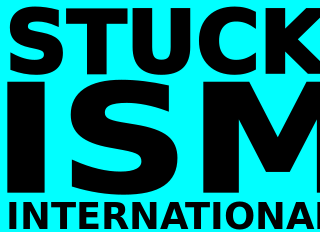
Stuckism is an international art movement founded in 1999 by Billy Childish and Charles Thomson to promote figurative painting as opposed to conceptual art. By May 2017 the initial group of 13 British artists had expanded to 236 groups in 52 countries.

Tate is an institution that houses, in a network of four art galleries, the United Kingdom's national collection of British art, and international modern and contemporary art. It is not a government institution, but its main sponsor is the UK Department for Culture, Media and Sport.

The Turner Prize, named after the English painter J. M. W. Turner, is an annual prize presented to a British visual artist. Between 1991 and 2016, only artists under the age of 50 were eligible. The prize is awarded at Tate Britain every other year, with various venues outside of London being used in alternate years. Since its beginnings in 1984 it has become the UK's most publicised art award. The award represents all media.

Sir Gordon Howard Eliott Hodgkin was a British painter and printmaker. His work is most often associated with abstraction.

The Hon. Sir Nicholas Andrew Serota,, is a British art historian and curator.
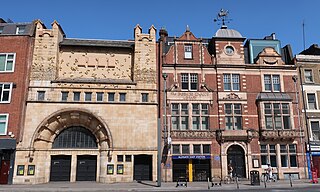
The Whitechapel Gallery is a public art gallery in Whitechapel on the north side of Whitechapel High Street, in the London Borough of Tower Hamlets. The original building, designed by Charles Harrison Townsend, opened in 1901 as one of the first publicly funded galleries for temporary exhibitions in London. The building is a notable example of the British Modern Style. In 2009 the gallery approximately doubled in size by incorporating the adjacent former Passmore Edwards library building. It exhibits the work of contemporary artists and organizes retrospective exhibitions and other art shows.

Brian Alfred Christopher Bushell Sewell was an English art critic. He wrote for the Evening Standard and had an acerbic view of conceptual art and the Turner Prize. The Guardian described him as "Britain's most famous and controversial art critic", while the Standard called him the "nation’s best art critic".
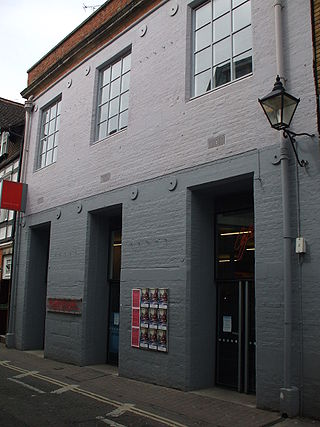
Modern Art Oxford is an art gallery established in 1965 in Oxford, England. From 1965 to 2002, it was called The Museum of Modern Art, Oxford.

John Bourne is a British artist and painter, living and working in Wales, and a member of the Stuckists art movement. He founded the Wrexham Stuckists group in 2001 and has been exhibited in the group's shows since then, including The Stuckists Punk Victorian. He has also taken part in Stuckist demonstrations against the Turner Prize. The subject matter for his paintings, which are done in a simplified style, comes from his memories.

Three famous paintings were stolen from the Kunsthalle Schirn in Frankfurt in 1994. Two thieves and a dealer were caught and sentenced to prison, but the people who had ordered the theft were never brought to justice. This case of art theft is unique in that the paintings were recovered by buying them back from the people behind the theft, resulting in a heavy profit for the Tate Gallery, owner of two of the paintings.
Anthony David Bernard Sylvester was a British art critic and curator. Although he received no formal education in the arts, during his long career he was influential in promoting modern artists, in particular Francis Bacon, Joan Miró, and Lucian Freud.
Louisa Buck is a British art critic and contemporary art correspondent for The Art Newspaper. She is also an author or co-author of books on contemporary art market.

Sir Nicholas Serota Makes an Acquisitions Decision is one of the paintings that was made as a part of the Stuckism art movement, and is recognized as a "signature piece" for the movement, It was painted by the Stuckism co-founder Charles Thomson in 2000, and has been exhibited in a number of shows since, as well as being featured on placards during Stuckist demonstrations against the Turner Prize.
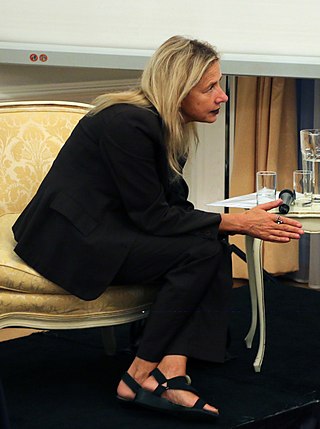
Iwona Maria Blazwick OBE is a British art critic and lecturer. She is currently the Chair of the Royal Commission for Al-'Ula’s Public Art Expert Panel. She was the Director of the Whitechapel Art Gallery in London from 2001 to 2022. She discovered Damien Hirst and staged his first solo show at a public London art gallery, Institute of Contemporary Arts in 1992. She supports the careers of young artists.
Robert Nicholas Cullinan is an art historian and curator. On 6 January 2015, he was appointed the 12th director of the National Portrait Gallery in London, a post he began several months later.

David Thorp is an independent curator and director. He curated GSK Contemporary at the Royal Academy of Arts and Wide Open Spaces at PS1 MoMA New York, among many others. He was Curator of Contemporary Projects at the Henry Moore Foundation and was also director of the South London Gallery, The Showroom and Chisenhale. He has been Associate Director for Artes Mundi, the biannual contemporary art exhibition and prize at the National Museum of Wales, and following the death of Michael Stanley in late September 2012 was appointed Interim Director at Modern Art Oxford. He was a member of the Turner Prize jury in 2004. Since the beginning of 2005 David Thorp has been an independent curator organising and initiating various projects in the UK and abroad. Thorp has held the positions of International Adjunct Curator at PS1 MoMA New York, Associate Curator at Platform China, Beijing, Curator of the Frank Cohen Collection, one of the most important collections of contemporary art in the UK.
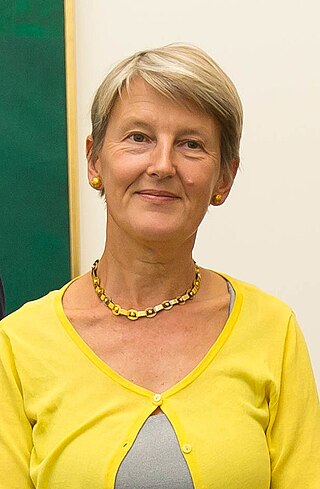
Penelope Curtis is a British art historian and curator. Fom 2015 to 2020 she was the director of Lisbon's Museu Calouste Gulbenkian, and from 2010 to 2015 director of Tate Britain. She is the author of several monographs on sculpture and has written widely at the invitation of contemporary artists.
The Geometry of Fear was an informal group or school of young British sculptors in the years after the Second World War. The term was coined by Herbert Read in 1952 in his description of the work of the eight British artists represented in the "New Aspects of British Sculpture" exhibition at the Biennale di Venezia of 1952.
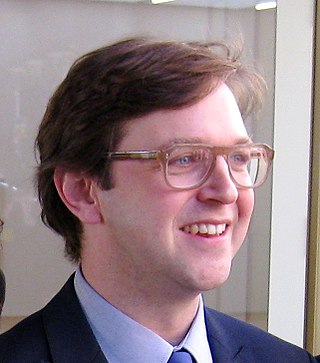
Alex Farquharson is a British curator and art critic who was appointed Director, Tate Britain in Summer 2015. As Director, Tate Britain he is Chair of the Turner Prize.